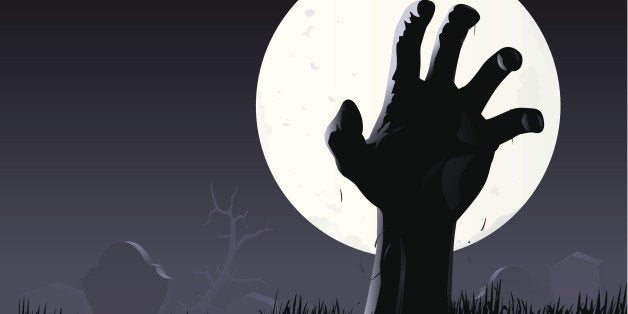
In case you missed it, the walking dead are taking over East Harlem. The New York Times referred to an area of high K2 use in East Harlem as "a street of zombies;" the New York Daily News (citing NYPD Commissioner Bratton) claims "Synthetic marijuana gives people abnormal strength, makes them dangerous" and the New York Post, quoting Assemblyman Mark Gjonaj, says "Our city streets are being taken over by zombies from a scene in 'The Walking Dead;'" and (again relying on accounts from Commissioner Bratton) the Post claims that "Weaponized weed triggers nude psychotic rampages." These stories are filled with misinformation, and the accounts of nude, psychotic rampages have already been debunked. But the fear and the imagery remain.
These headlines are ripped from a classic 'reefer madness' style drug scare, where anxiety and irrationality supplant knowledge and reason. Drug scares, according to scholar Craig Reinarman, have been a recurring feature of U.S. society for than 200 years. In his classic article, The Social Construction of Drug Scares, he notes that they share a number of features, including media magnification of the problem, linking the drug to a 'dangerous class,' and scapegoating a drug for a wide array of public problems. Simply put, drug scares have been used for centuries to vilify particular groups of people to serve political ends.
In fact, the first U.S. anti-drug law was passed in 1875 at a time of increased concern about Chinese immigration in San Francisco and outlawed opium smoking because local officials feared Chinese men were using it to "lure white women into their opium dens and to their ruin." In 1934, the New York Times published a story under the headline, "Negro Cocaine 'fiends' are a new Southern menace," at a time when concerns about interracial mixing were high. From reefer madness to the now debunked crack baby myth, drug scares have long fueled U.S. drug policies, usually with disastrous results.
So what's going on with the K2 drug scare? First, it's important to acknowledge that the city does seem to be experiencing an increase in the use of K2 and other synthetic cannabinoids. While most people do not have severe adverse reactions to K2, some do. It is also true that some people who are homeless use K2, in part, because, unlike marijuana, it does not show up on drug tests that may be required for them to access certain social services, such as drug treatment. However, folks who are not homeless also use K2, and its use is not restricted to the area in East Harlem that has received so much media attention. Nonetheless, the K2 drug scare has become inextricably linked to the city's homelessness problem, particularly to the corner of 125th and Lexington, which has long had a significant population of homeless people and is also the site of increasing gentrification.
By referring to them as "zombies" and raising the specter of superhuman strength, the media and government leaders are dehumanizing the city's homeless population (at an all time high) and portraying them as a frightening and potentially violent force. Not coincidentally, almost immediately following the New York Times story about a "street of zombies," the de Blasio Administration swept in and broke up a homeless encampment in the East Harlem area and targeted almost a dozen others across the city.
According to Reinarman, "[D]rugs ... provide elites with fig leaves to place over unsightly social ills." K2 appears to be functioning as a fig leaf to cover over a set of pre-existing and complex issues, including homelessness, gentrification, poverty, addiction, and mental illness, in East Harlem and other poor neighborhoods.
As long we focus narrowly on K2, we will never get to the underlying causes of the problem. Instead of generating broad, evidence-based public health solutions, these kinds of drug scares typically drive increased criminalization and stigma -- the very things that make it even harder for those who need help to get it -- while doing nothing to address the actual issues.
I live just a few blocks from the so-called "street of zombies," and what I see are not "the walking dead," but fellow humans in need of assistance and support. So let's tone down the rhetoric and stop hiding behind the fig leaf of a drug scare. Let's get to the real work of solving complex problems by relying on research and compassion, not fear and misinformation.